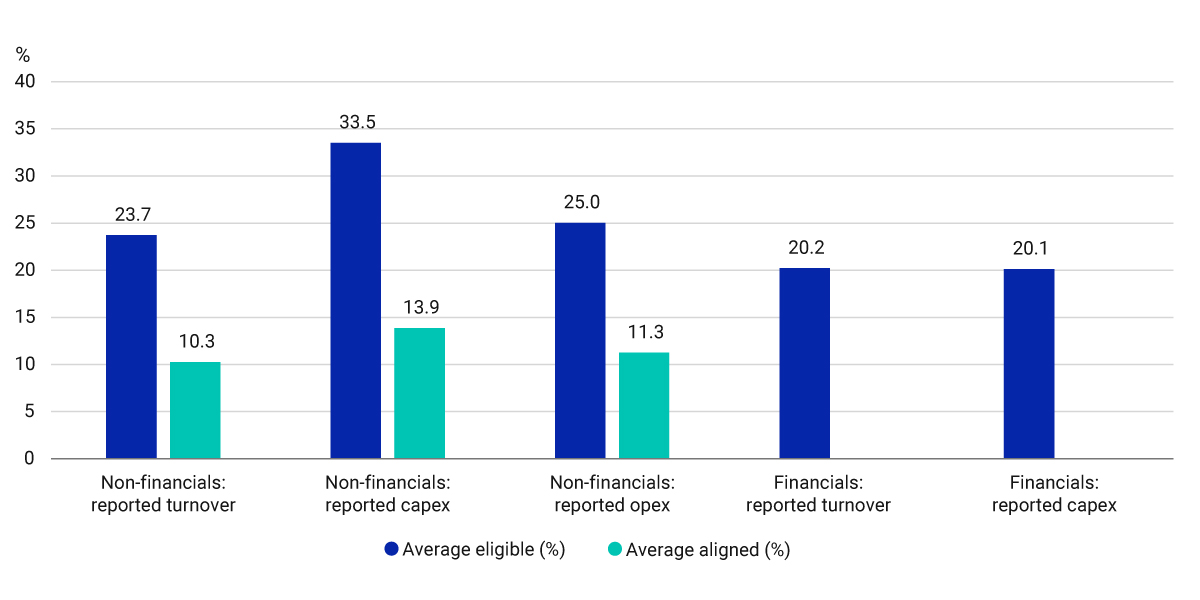Extended Viewer
What Does EU Taxonomy Reported Data for 2023 Tell Us?
Last year was an important one for sustainable finance and the EU Taxonomy for sustainable activities.1 For the first time, non-financial companies reported on alignment with the Taxonomy’s first two environmental objectives: climate mitigation and adaptation. In addition, financial companies disclosed how much of their assets were eligible for Taxonomy alignment.
We analyzed the data reported by non-financial companies and found that:
- The average Taxonomy-aligned turnover was just above 10%.
- On average, less than half of the turnover from activities eligible2 under the EU Taxonomy was aligned,3 showing the potential to further enhance alignment over time.
- The average Taxonomy-aligned capital expenditure (capex) of around 14% was higher than the average aligned turnover, which is promising because it shows that companies are actually investing in green initiatives.
For financial companies that reported on eligible assets, the average eligible turnover and average eligible capex were both just above 20%.
We note that capex alignment was higher than that of turnover, on average. This relationship suggests that transition finance, commonly seen as moving out of brown and into green(er) activities, could be an important driver of Taxonomy-aligned activities.
Data quality and comparability were a key issue in 2023, the first year that non-financial companies reported on Taxonomy alignment. In particular, we found that some companies appeared not to adhere to the regulatory templates and were not able to classify activities as per the Taxonomy regulation.
EU Taxonomy eligibility and alignment

1 This information is provided “as is” and does not constitute legal advice or any binding interpretation. Any approach to comply with regulatory or policy initiatives should be discussed with your legal counsel and/or the relevant competent authority, as needed.
2 An activity is eligible if it is listed in the EU Taxonomy and has Technical Screening Criteria described for it.
3 A Taxonomy-eligible activity is considered aligned if it substantially contributes to at least one of the six climate and environmental objectives while not doing significant harm to the others and also meets minimum social safeguards.
Related content
EU Taxonomy Reporting Has Perplexed Issuers
Although the EU Taxonomy is a pivotal framework for assessing sustainability in economic activities, it remains a source of confusion. Its correct interpretation will be key to ensure that data is properly disclosed and reporting obligations met.
Read the postMSCI EU Taxonomy Reported Data User Guide
The objective of this guide is to help users understand and fulfil the reporting requirements under Commission Delegated Regulation (EU) 2021/2178 which supplemented Article 8 under the EU Taxonomy Regulation.
Access the PDFMSCI EU Taxonomy Methodology (Client access only)
MSCI’s EU Taxonomy Methodology has been designed by MSCI ESG Research in response to the EU Sustainable Finance Action Plan to identify companies generating revenue from business activities that are eligible and “potentially aligned” with the EU Taxonomy.
Read more